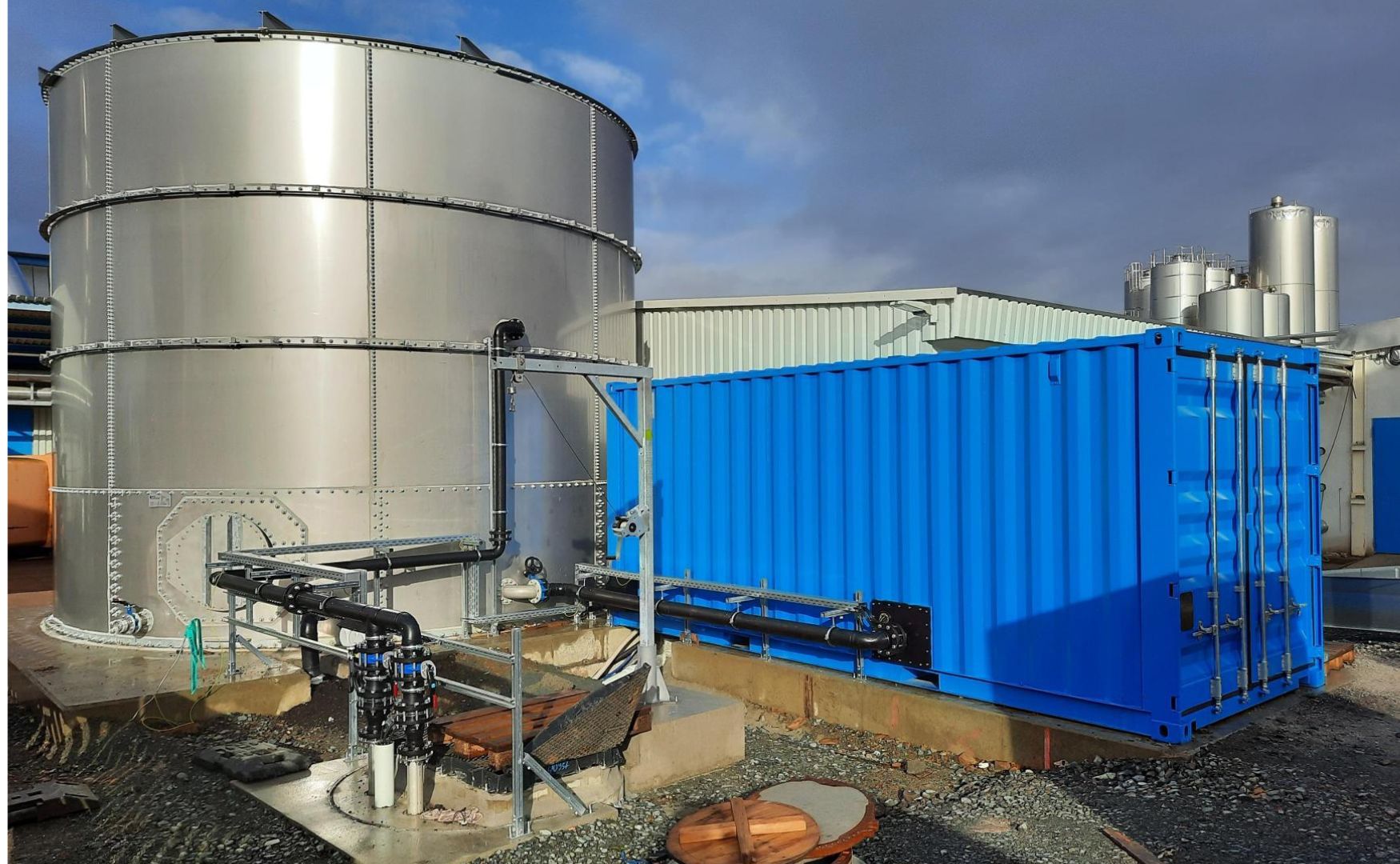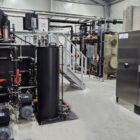Homogenization refers to the process in which different substances or phases are evenly distributed within a medium. The aim is to produce a uniform consistency or composition. In water and wastewater technology, homogenization is used to ensure the even distribution of solids, organic loads or chemical additives before the water enters downstream treatment processes.
Technical background to homogenization
The homogenization process is carried out using mechanical, hydraulic or pneumatic methods:
Mechanical homogenization
Here, agitators, mixing shafts or screws are used to physically mix the medium. This method is particularly effective with viscous media and high solids content.Hydraulic homogenization
In this process, the medium is swirled under high pressure using pumps or nozzles. This technique is particularly suitable for liquid media with low viscosity.Pneumatic homogenization
The medium is stirred up and mixed by blowing in air or gases. This method is mainly used in anaerobic processes to promote biological activity.
Applications in industrial water and wastewater treatment
Sewage treatment plants
Homogenization is used in primary clarifiers and digesters to evenly distribute organic matter and optimize biological degradation performance.Chemical-physical plants (CP plants)
Before dosing chemicals such as precipitants and flocculants, the wastewater is homogenized in order to increase the efficiency of these processes.Industries with a high proportion of solids
In industries such as the food or paper industry, homogenization helps to combine solid and liquid components before the wastewater enters filtration or sedimentation systems.

Photo: Our ALMA Neutra neutralization system, installed in the ALMA Modul technical room container, with a stacking tank for homogenizing the wastewater
Homogenization in practice
In practice, special homogenization systems are used depending on the wastewater composition and target specifications. These can include modular agitators, submersible motor agitators or special mixing tanks. The correct selection and design of the technology is crucial in order to minimize operating costs and maximize the efficiency of the downstream treatment stages.
Conclusion
Homogenization is a key process step in industrial water and wastewater treatment. The uniform distribution of ingredients ensures efficient and stable further treatment. With the right technology, both the efficiency of wastewater treatment can be increased and operating costs reduced.
For further information on our products, please feel free to contact us at any time!








